Planting delphinium seeds for seedlings: when and how to sow, further care and cultivation in the open field
Delphinium (as well as larkspur or larkspur) is a perennial flower that will decorate any summer cottage. Much of its popularity is due to its similarity to the head of a dolphin (hence the name). As a rule, the main method of growing delphiniums is the initial planting of seeds for seedlings with further planting in open ground.
Read on to learn how to do this correctly so that a capricious plant will please you with its flowering this summer.
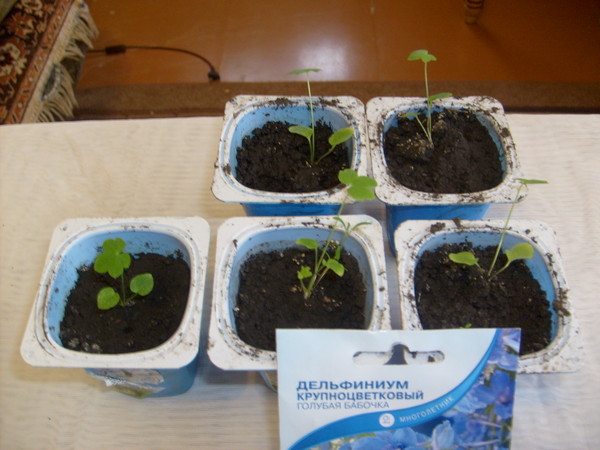
Content
Popular varieties
Depending on the territory of the initial appearance, delphiniums are divided into the following varieties:
- Scottish;
- Marfinsky;
- New Zealand.

The most popular on our sites is its New Zealand variety, but it should be said right away that its cost is much higher than the price of mixtures or other less refined delphinium varieties.

Delphinium planting technology for seedlings
When to plant seeds for seedlings: optimal timing in 2021
The timing of planting a delphinium varies depending on the possibility of supplementing the seedlings to the optimal daylight hours. If you have special devices (phytolamps), then you can start sowing already in Februaryif not, then it is desirable since March.
As for the moment when it is better to plant delphinium in different climatic zones, the terms are as follows: in the South - starting from February, in the Central Lane (Moscow region) - from mid-March, in the Urals and Siberia - from the end of March.
According to the lunar calendar in 2021
Choosing the optimal date for sowing seeds can help youMoon calendar.
Sofavorable days for sowing delphinium seedlings in 2021 according to the lunar calendar are:
- in February - 1-8, 10-20, 25-29;
- in March - 2-8, 10-14, 29-31;
- in April - 1, 2, 5-7, 9, 17-20, 24, 25;
- in May - 2-6, 15-17, 20, 21, 25-31;
- in June - 2-4, 7-9, 11-14, 16-19.
Important! Bad dates are the same for all cultures. These are the days of the Full Moon and New moons, as well as the period when the Moon is in Aquarius, because it is a barren and dry sign -italicized.
Unfavorable days according to the lunar calendar for 2021 for the landing of the delphinium are the following dates:
- in February -10-11, 27;
- in March -9-10, 13, 28;
- in April -5-6, 12, 27;
- in May -2-4, 11, 26, 30-31;
- in June -10, 24, 26-27.
Preparing and processing delphinium seeds before planting
Important! Remember, delphinium seeds should be kept in the refrigerator.
Before sowing a delphinium for seedlings, its seeds must be properly prepared, in other words, processed before planting for better germination and protection against possible fungal diseases.
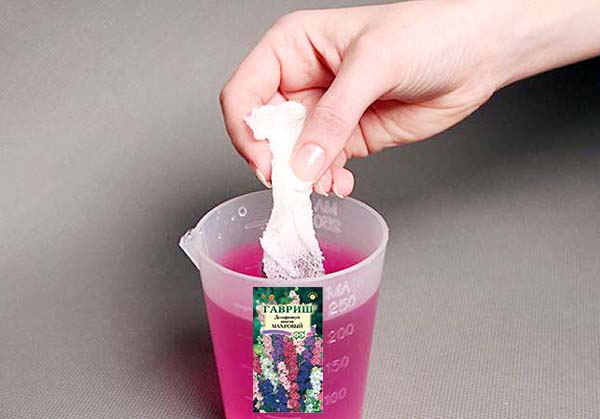
To do this, you need to do the following:
- Disinfect the seeds in a pink solution of potassium permanganate for 20 minutes (always in a gauze bag or bundle) or, at your choice, in a special fungicide like "Maxim" or "Fitosporin" within 1-2 hours (consumption of funds 1.5 g per 1 liter of water).
- Rinse the seeds in water (you can directly in the same bag).
- Soak again in Epipa solution (4 drops per 100 ml of water) for 8-10 hours.
- Dry the seed thoroughly.
Tanks and soil mixture
As for the containers in which it is desirable to grow delphinium, some sow directly into pots, believing that the less the plant is injured by different transplants, the better. In fact, this pot has a fairly large amount of soil, and if it is not immediately occupied by the roots, then the moist soil tends to turn sour. In acidic soil, all sorts of pathogens of diseases settle much easier, and the delphinium is very sensitive to black leg, and to root rot. Therefore, it is better to use small containers for planting it, for example, small disposable plastic containers. Remember to punch drain holes in them.

Important! As a rule, various kinds of salads are sold in such plastic containers, so before using it, you must first thoroughly wash it with an antibacterial dishwashing detergent.
The soil for planting delphinium can be used as a purchased one, for example, universal for seedlings of flowers based on peat, soil for succulents and cacti is also well suited, and you can also make it at home with your own hands.
The recipe for preparing the soil mixture is as follows:
- 1 part peat;
- 2 pieces of garden or vegetable garden land;
- 1 part humus (compost);
- 1/2 part of washed sand.
After you mix everything, the resulting soil mixture must first be sieved, and then, to make it even looser and stay moist longer, add perlite (about 1 glass per 10 liters of soil).
Now only disinfect the soil from spores of fungi, pests and weed seeds.
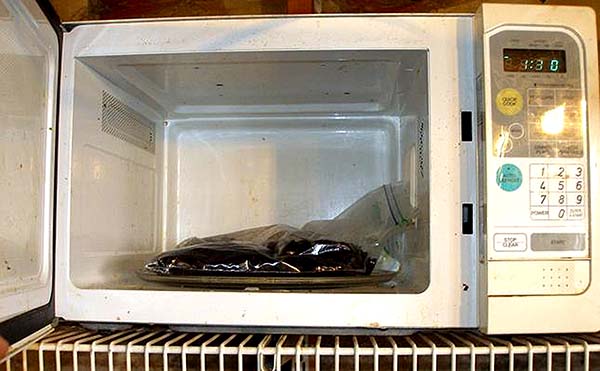
Advice! It is also possible to steam the soil in the microwave for only 5-6 minutes!
Better yet, spill the soil with an additional fungicide, for example, a solution "Fitosporin""Or" Fitolavina ".
Sowing seeds
Planting a delphinium with seeds for seedlings can be done in accordance with the following step-by-step instructions:
- To begin with, fill the planting containers with wet soil mixture, level and slightly compact the soil.
- Now you need to spread the seeds over the surface of the soil (no need to press and bury anything). You can use either a toothpick or tweezers. Since the seeds are not very small, you can do it with your hands.
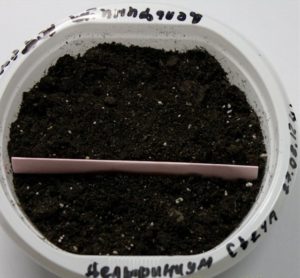
- Sprinkle lightly on top with the same earth or vermiculite to improve the moisture-air balance.
- Close with a lid or cover with foil.
- We put it in a dark place (the refrigerator is a dark place!) Or put it in a dark bag.
- Many experienced gardeners recommend placing a container with crops in the refrigerator until the first shoots.
In the refrigerator, the seeds will undergo artificial stratification.
Video: how to grow a delphinium from seeds
There is another interesting way of sowing delphinium seeds with stratification - in the snow.
Delphinium seedlings care after planting
As a rule, the first friendly shoots appear in 1-2 weeks. Therefore, after 7-8 days, start regularly checking the planting capacity in order to quickly remove the container from the refrigerator and put the young seedlings on the windowsill, where there is a lot of light, or under phyto-lamps (a more budget option is LED lamps). Further, the temperature for the normal development of delphinium seedlings should be 18-20 degrees. If the temperature is below 16 or above 20, then this will significantly slow down the growth of young seedlings.

Now it is necessary to always keep the soil slightly moist, in no case allowing it to dry out.
Daylight hours for the confident development of delphinium seedlings should be at least 12 hours, and preferably 14 hours.
Picking
When the plant has 2 real leaves, you can begin to dive the delphinium.
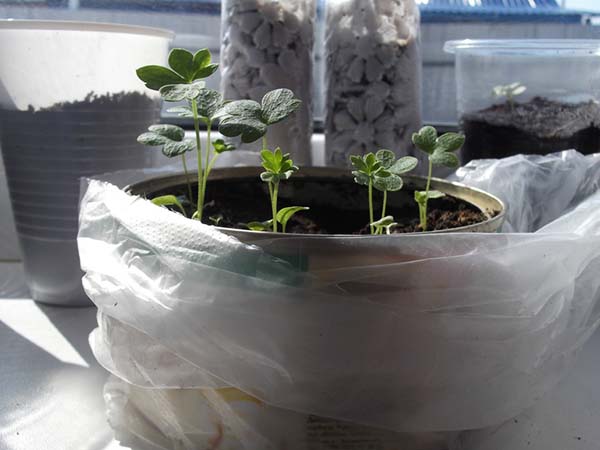
Before diving, be sure to water the plantings abundantly so that the roots do not get very injured and easily come out of the ground.
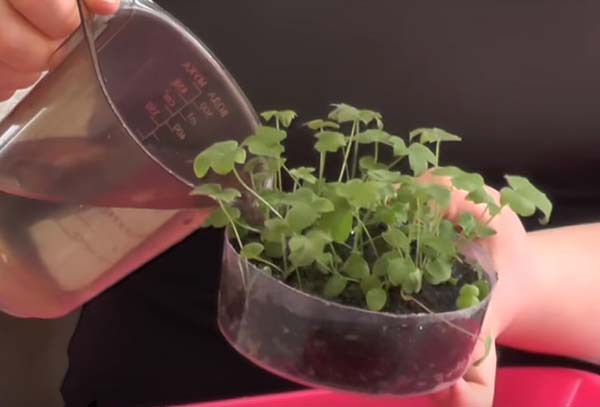
You can take the same soil for picking, but adding a little complex mineral fertilizer containing nitrogen, phosphorus and potassium (about 1 tbsp. L per 5 l of soil mixture) into it.
It is optimal to dive delphinium seedlings into separate containers, for example, into cassettes.
The pick can be carried out as follows: take out the entire earthen lump with plants from the container, and then, separating it one by one, transfer it to a new “dwelling” (after having spilled the earth abundantly). Make small indentations in it, and then sprinkle the roots with earth up to the root collar and gently compact.

Leaving after a pick
The unpicked delphinium seedlings must now be returned to a sufficiently lit (12-14 hours) and relatively warm (18-20 degrees) place.
The first watering after picking should be done no earlier than a week later.
Further care for the delphinium consists in monitoring the temperature regime and maintaining moisture, as well as in several dressings.

Before planting a delphinium in open ground, it is advisable to feed it with complex mineral fertilizer 2 times 4 weeks before planting with an interval of 2 weeks. The following fertilizers can be used as such: Agricola, Solution, Gumistar and Fertika Lux. This should be exactly root feeding, fertilizer should in no case fall on the leaves of the plant. If suddenly it does get in, then it will need to be washed off immediately with water.
When and how to plant a delphinium in open ground
As soon as the delphinium seedlings have 3-4 real leaves, it is worth starting to harden it in the fresh air. Somewhere in 10-14 days after hardening, the timing for planting flowers in the garden is suitable.
The earliest time for the delphinium to land in open ground is the end of April, which is suitable for the South.In the Middle zone (Moscow region), it is better to plant in May, and in the Urals and Siberia - in late May-early June.
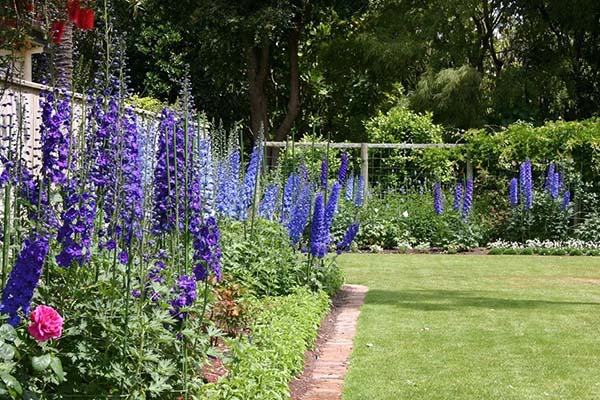
It is advisable for the delphinium to choose a place where there is a lot of light until noon, and the plantings are well protected from strong winds, for example, it can be a place near the wall of a house or a fence. Because this plant is quite drought-resistant, it is necessary that moisture does not stagnate in it, otherwise it will begin to undermine and ultimately rot.
Delphinium is best planted on previously prepared beds, into which humus, peat and sand were previously introduced. Biohumus can be used as an alternative.
It is best to plant a delphinium in the ground at a distance of 20-30 cm from each other in holes or directly into a small trench.
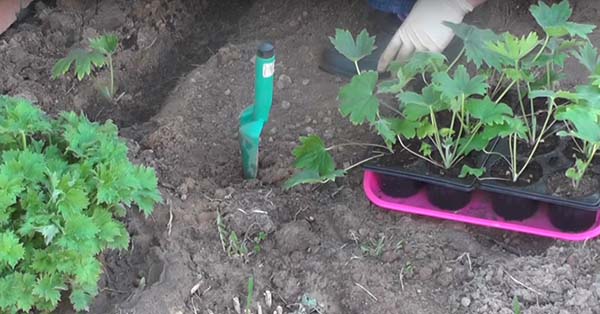
Immediately after planting, it is recommended to mulch the delphinium so that the soil does not dry out so quickly, and there is additional access to oxygen. In addition, when watering, a layer of mulch will help not erode the roots of the plant.
Now it remains only to water the plantings abundantly from a garden watering can.
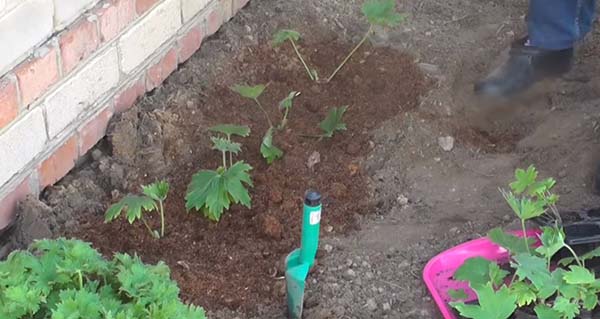
Outdoor delphinium care
What actions need to be taken so that the delphinium develops and pleases with a stormy and long flowering?
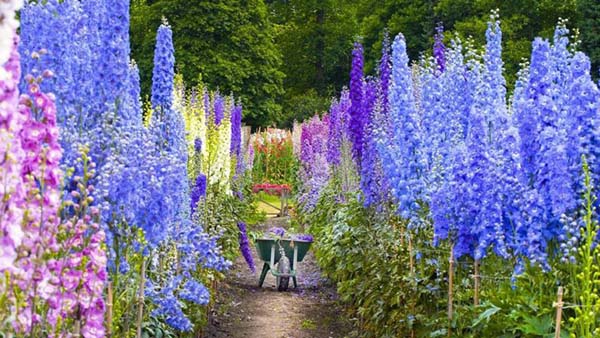
Of course, the care of a delphinium should include weeding, loosening, watering (at least 2 times in 7 days) and feeding.
Top dressing is necessary only if you are not sure of the sufficient fertility of your soil, because then the plant will actively grow greens, but the peduncles can not wait.
If the delphinium began to turn yellow, and you see that the plant is developing rather slowly, then it is recommended to feed it.
It is desirable to feed the delphinium 3 times per season:
- After planting in the ground, as soon as the height of the shoots reaches 12-15 centimeters, complete mineral dressing.
- During the formation of buds - complete feeding, but with the least amount of nitrogen, that is, with the maximum content of potassium and phosphorus.
- When the buds of renewal begin to be tied, that is, at the end of flowering - again, phosphorus-potassium dressing.
After each feeding, the plant should be spilled abundantly with plain water.
From the moment the inflorescences are formed on the plant, it is recommended to increase the number and volume of waterings.
When only the height of the delphinium is about 25-35 cm in height, it must be thinned out by removing the weakest shoots, leaving about 5-6 pieces per 1 bush. So we can get more powerful inflorescences in the future.
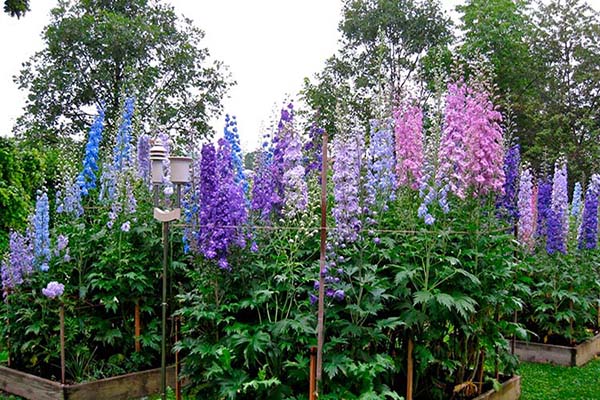
You should definitely take care of the garter of the delphinium shoots. So, the first time they should be tied up when they reach a height of 45 cm, and the second and last - 110 cm. Moreover, it is recommended to tie them not to one support, but to several at once, that is, the "eight". Here are some of the most popular garters: 1. Stick twigs of twigs around the bush in the spring (this will be a kind of natural support) or 2. Place a metal mesh rolled up in a cylinder. Although not so decorative, it is much easier and simpler.
In late summer - early autumn, it will be necessary to carry out additional activities for the care of the delphinium so that the flower is well prepared for winter and endures all the harsh hardships.
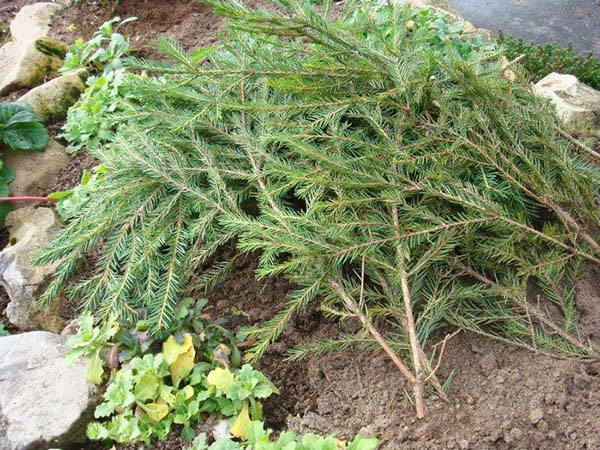
You need to start by removing the entire aerial part after the shoots have dried, leaving literally small stumps. And with the onset of cold weather, cover the surface with spruce branches or straw.
Video: summer care for delphinium before and after flowering
Thus, it is not so difficult to grow a delphinium from seeds at home, you just need to follow the basic rules and recommendations for planting it and further caring for the flower up to pruning and shelter for the winter. And then your reward will be more than worthy.
Video: growing delphinium - from sowing seeds to abundant flowering

